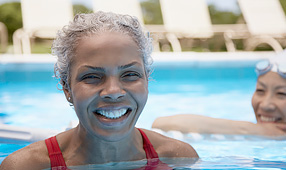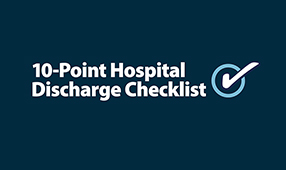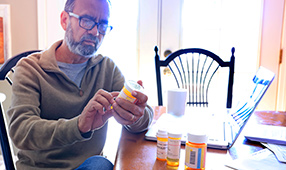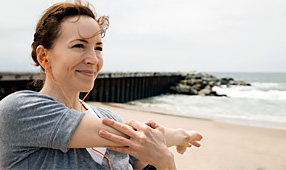Summer often signifies the end of a school year and a much-needed hiatus from stress, grading papers and formulating tests. But when the weather heats up, and outdoor adventures abound, it’s not uncommon to encounter hiccups that can ruin summer fun.
Here’s how to protect yourself, or find relief, from four common summer hazards that can spoil your break:
1. Mosquitoes
As the temps hit the mid-60s or higher, mosquitoes are out and ready to bite. As a carrier of diseases such as malaria, yellow fever, encephalitis and West Nile Virus, this nasty pest not only has an irritating bite, it’s responsible for more deaths than any other critter.
Prevent it: Stay indoors at dawn and dusk when mosquitoes are at their peak. If you go outside, wear long sleeve shirts and loose fitting pants during high times. Steer clear of still water (where mosquitoes lay their eggs), and wear repellent. “You can even wear bracelets infused with bug repellant,” says Francesca Fusco, M.D., a New York City dermatologist. “DEET, Picaridin and a variety of natural botanicals have proved effective in deterring mosquitoes.”
Treat it: Clean the area, apply hydrocortisone cream to reduce inflammation. If you suffer from unbearable itching, take an oral antihistamine such as Benadryl, but don’t scratch! Scratching increases inflammation and worsens skin irritation. Chamomile tea also is great for soothing itchy mosquito bites. Let the tea bag cool, then dab it directly on the inflamed area.
2. Heat stroke
On average, 675 people die from heat-related complications each year in the United States—more than tornadoes, hurricanes, floods, lightning or any other weather event combined. When your body overheats, your cooling system shuts down. You can’t sweat fast enough to dissipate heat so your body temp rises. Thirst, fatigue and cramps are the first signs of trouble, followed by nausea, rapid heartbeat and high fever.
Prevent it: Stay out of the heat, especially when exercising; drink plenty of fluids, which helps you perspire so you dispel body heat effectively; and go easy on alcoholic beverages and soft drinks, which can dehydrate you further. “Cold snacks such as frozen grapes or fresh watermelon have high water content and also cool from the inside out,” says Julie McKee, M.D., assistant professor in the Department of Family Medicine at University of Texas Medical Branch in Galveston, Texas.
Treat it: If you start to feel cramps or muscle pain—both symptoms of dehydration—drink water, lie down in a cool place, elevate your legs and apply wet towels on your skin to cool down. If you’re vomiting, disoriented or suffering from nausea, seek medical attention immediately. Heat stroke can be fatal if left untreated.
3. Sunburn
According to a survey released by The Skin Cancer Foundation, 42% of people polled still get fried at least once a year, despite the plethora of effective sunscreens on the market. Unfortunately, pain and peeling aren’t the only complications. There’s the long-term potential for skin cancer, and sun-damaged skin will age you prematurely.
Prevent it: Try to stay out of the sun between the hours of 10 a.m. and 4 p.m., and when you do go outside, slather up with broad-spectrum sunscreen repeatedly to avoid getting burned. “A daily moisturizer with SPF 15 may be sufficient when you are spending all your time indoors, but it is necessary to ‘switch up’ to a broad spectrum SPF 30, 10-20 minutes prior to sun exposure,” Fusco says. You also can purchase sun-protective clothing that has an ultraviolet protection factor (UPF) rating, which is similar to SPF (sun protection factor).
Treat it: If you do get burned, get out of the sun and apply cool compresses, refrigerated aloe lotion or calendula cream; and take oatmeal baths in cool water. One technique: Put oatmeal in an old sock, tie it closed then run a bath with the “oatmeal sock” in it. The oatmeal is soothing for the skin, and the sock keeps your drain from getting clogged up. If the burn is painful, acetaminophen or ibuprofen may provide some relief.
4. Poison ivy, poison oak and sumac (technically known as Rhus Dermatitis)
Each year, about 50 million people have a reaction to poison ivy, sumac and oak.
Prevent it: The best defense for navigating areas prone to these plants, Fusco says, is to wear full-coverage clothing, protect skin with a barrier cream such as Ivy Block and learn to recognize poisonous plants so you can steer clear altogether.
Treat it: If you do have a reaction, immediately bathe your skin with cool water. Oatmeal baths or calamine lotion may help, too, but the best treatment, Fusco says, is hydrocortisone cream. “When an over-the-counter cream doesn’t work, see your dermatologist for a prescription-strength tube.” And be sure to wash any clothing that may have been exposed—even footwear, which could track poisonous plant oils into the house.












